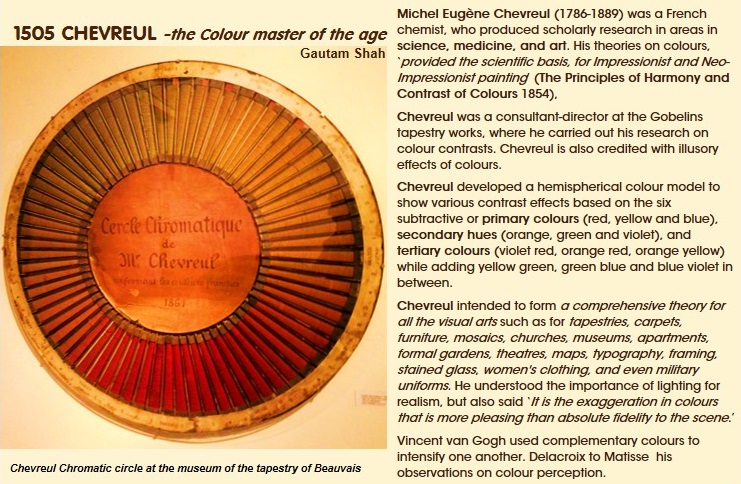1505 CHEVREUL –the Colour master of the age -by Gautam Shah
Michel Eugène Chevreul (1786-1889) was a French chemist, who produced scholarly research in areas in science, medicine, and art. His theories on colours, ‘provided the scientific basis, for Impressionist and Neo-Impressionist painting’ (The Principles of Harmony and Contrast of Colours 1854).
Chevreul was a consultant-director at the Gobelins tapestry works, where he carried out his research on colour contrasts. Chevreul is also credited with illusory effects of colours.
Chevreul developed a hemispherical colour model to show various contrast effects based on the six subtractive or primary colours (red, yellow and blue), secondary hues (orange, green and violet), and tertiary colours (violet red, orange red, orange yellow) while adding yellow green, green blue and blue violet in between.
Chevreul intended to form a comprehensive theory for all the visual arts such as for tapestries, carpets, furniture, mosaics, churches, museums, apartments, formal gardens, theatres, maps, typography, framing, stained glass, women’s clothing, and even military uniforms. He understood the importance of lighting for realism, but also said ‘It is the exaggeration in colours that is more pleasing than absolute fidelity to the scene.’
Vincent van Gogh used complementary colours to intensify one another. Delacroix to Matisse his observations on colour perception.
